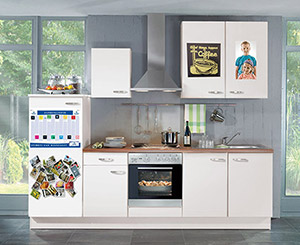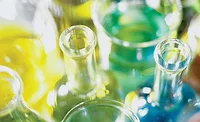Focus On: New Technology Enables Self-Adhesive Media to be Removed Without a Trace
A new rubber formulation allows for easily removable self-adhesive print media.
Imagine printing out your best vacation snapshots and sticking them on the cupboard or refrigerator door—then peeling them off without a trace. While residue has traditionally been an issue with stickers, a new development (self-adhesive Tacklite Stick&Go 4.0 photo-print media from Nopar International GmbH, Bremen, Germany)

|
is addressing the challenge. The DIY stickers’ optimal adhesion and easy removal is achieved using LANXESS’ Levamelt synthetic rubber. The companies also partnered to engineer a smart finishing process that ensures the best possible print results using inkjet or even laser printers.
“Decorating your own four walls with stickers has always been a rather hit-and-miss affair,” said Stefan Schmitt, managing director of Nopar International. “The problem is the stubborn sticky residue that is often left behind when your remove them. We set about investigating an alternative—and hit upon Levamelt from LANXESS. This smart material finally allowed us to develop a superbly sticky coating that really does leave no trace on surfaces such as glass, wood or even paint. And because the adhesive is plasticizer-free, there is no risk of the substrate being altered by these additives gradually ‘leaking’ out.”
“This is because we can manufacture our Levamelt EVM rubber with different polarities by varying the proportion of the vinyl acetate component,” explained Michael Herrmann, an expert in synthetic rubbers from the High Performance Elastomers business unit at LANXESS. “So we were able to offer Nopar a version that is perfectly suited to a variety of everyday substrates.”
High-tech engineering goes into the manufacturing process for the new photo-print media from Bremen. Together, Schmitt and LANXESS developed a production method for applying the Levamelt in precisely measured thicknesses to the reverse of the Tacklite film without creating tensions in the carrier, as can occur when coating coextruded films, for example. After conventional rolled material is stretched out to apply the print coating and then attached to a backing paper, it can no longer relax—and tends to turn wavy in the printer.
“In contrast, our new process produces tension-free Tacklite media that lie nice and flat in the printer without developing any waves—ensuring exceptionally high-quality print results,” Schmitt said. The new process can offer additional advantages as well. For example, designs can be printed to the new Tacklite media using laser printers and photocopiers. If the media needs to stick to less uniform surfaces, such as wallpapers, the technology is also suitable for small custom runs with different adhesive properties. Schmitt therefore is considering expanding the product range along these lines, and a major printer manufacturer has reportedly expressed an interest in the Tacklite Stick&Go 4.0 films.
“The potential applications for these removable media are really vast,” Herrmann said. “Apart from self-adhesive photos, there is scope for not just advertising posters, which can simply be printed and stuck in shop windows at the drop of a hat, but also wall decals, hand-designed decorations for kitchen tiles, and DIY living-room friezes that can move house when you do and go up again in your new home—all because Levamelt makes the Tacklite Stick&Go 4.0 media so easily reusable.”
For more information, visit www.lanxess.com.
Looking for a reprint of this article?
From high-res PDFs to custom plaques, order your copy today!




